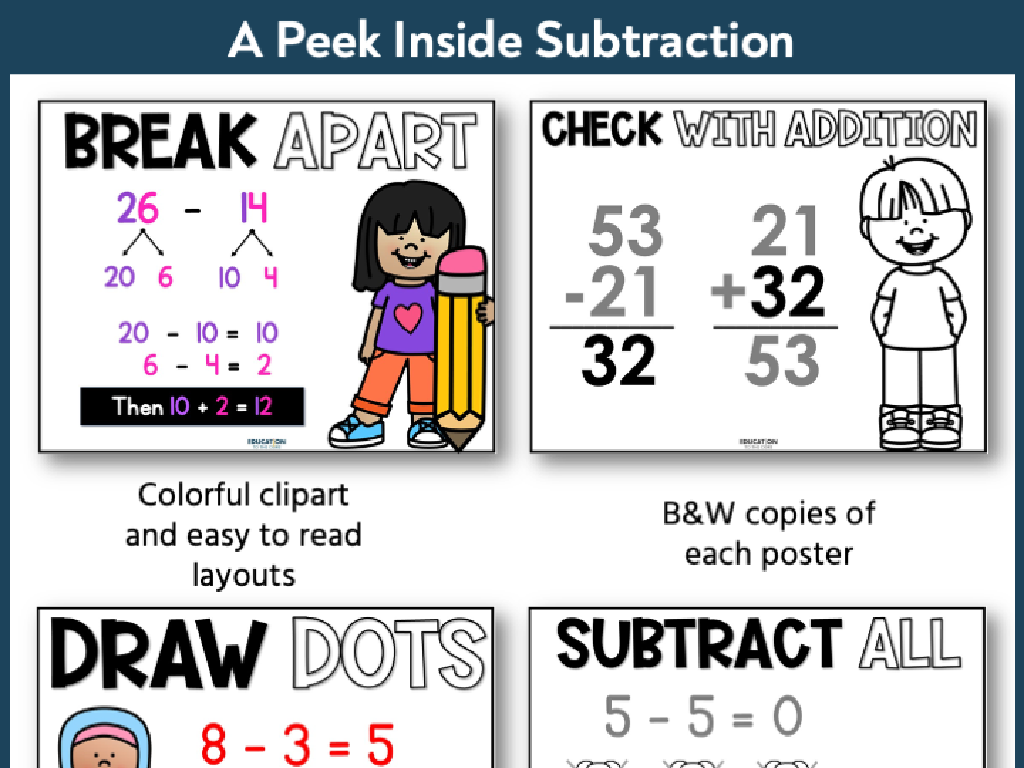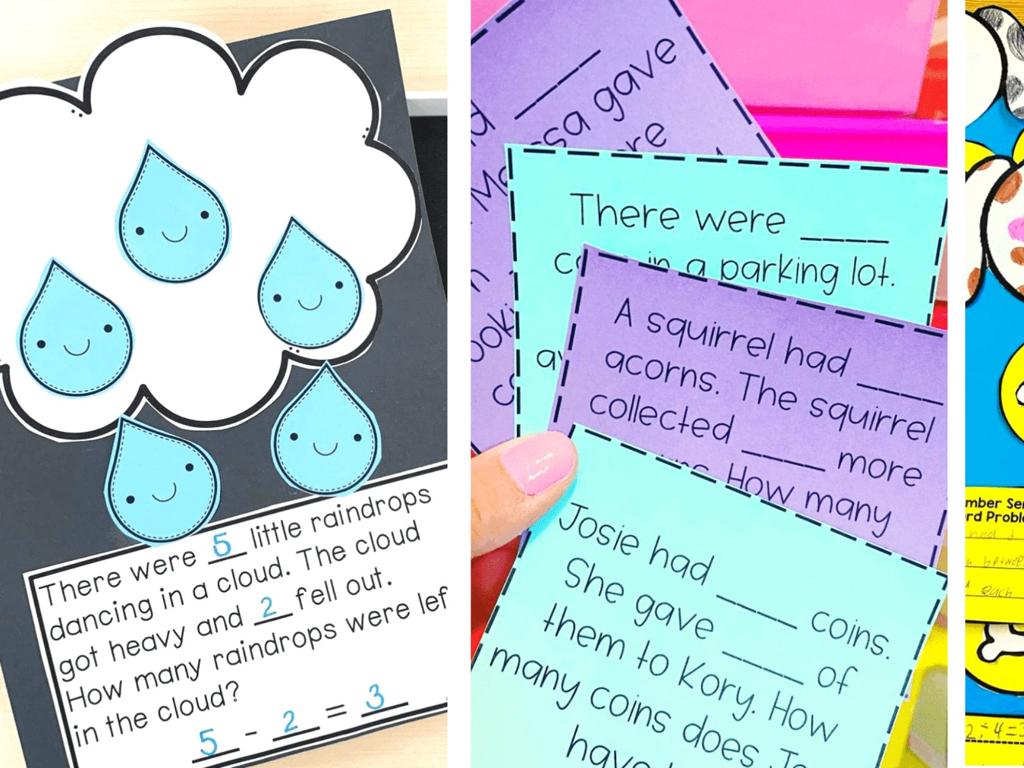Interpret Graphs Of Proportional Relationships
Subject: Math
Grade: Seventh grade
Topic: Proportional Relationships
Please LOG IN to download the presentation. Access is available to registered users only.
View More Content
Interpreting Graphs of Proportional Relationships
– Define proportional relationships
– A relationship where two quantities increase at the same rate.
– Proportionality in daily life
– Examples: recipes, currency exchange, and fuel efficiency.
– Graphs visualize relationships
– A straight line through the origin shows a proportional relationship.
– Graph interpretation practice
|
Begin by defining proportional relationships, emphasizing that they are a constant rate of increase between two quantities. Use real-life examples that are relatable to seventh graders, such as recipes (doubling ingredients for a cake), currency exchange rates, or calculating miles per gallon for a car trip. Explain how graphs with straight lines passing through the origin represent these relationships, making it easier to visualize and understand the concept. Encourage students to think of other examples where proportionality is evident. Conclude with practice interpreting various graphs to identify proportional relationships, reinforcing their understanding through visual means.
Understanding Proportional Relationships
– Define proportional relationship
– A relationship where two quantities increase or decrease at the same rate
– Explore constant rate of change
– If y changes at a constant rate as x changes, the relationship is proportional
– Speed-Distance relationship
– If a car travels at a steady speed, the distance covered is proportional to the travel time
– Recipe Ingredients proportionality
– The amount of each ingredient in a recipe increases or decreases proportionally with the servings
|
This slide introduces the concept of proportional relationships, a fundamental component of understanding how variables relate in a consistent, predictable way. Begin by defining a proportional relationship as one where two quantities vary at a constant rate relative to each other. Emphasize the concept of a constant rate of change, which is the cornerstone of proportionality. Use relatable examples like the relationship between speed and distance to illustrate how time affects distance traveled at a constant speed. Similarly, discuss how recipe ingredients change in direct proportion to the number of servings, reinforcing the concept with everyday examples. Encourage students to think of other examples where they encounter proportional relationships in their daily lives.
Graphing Proportional Relationships
– Plotting proportions on graphs
– Use a graph to show the consistent ratios between quantities.
– Slope in proportional graphs
– Slope represents the rate of change; in proportion, it’s constant.
– Recognizing proportional graphs
– Proportional graphs are straight lines through the origin.
– Interpreting graph features
|
This slide introduces students to the concept of representing proportional relationships using graphs. Start by explaining how to plot points that represent the ratios of the proportional relationship. Emphasize that the slope of the line in a proportional graph is constant, which means it represents a steady rate of change. Show how to identify proportional relationships by looking for straight lines that pass through the origin (0,0), indicating that the relationship starts from a zero point. Discuss the importance of interpreting features of the graph, such as the slope, to understand the relationship between variables. Provide examples and encourage students to practice plotting points and identifying proportional relationships in various graphs.
Analyzing Graphs of Proportional Relationships
– Interpret slope and y-intercept
– Slope represents rate of change, y-intercept is the start value
– Compare proportional graphs
– Look at the steepness and starting points of different lines
– Graphs: Proportional vs. Non-proportional
– Proportional graphs are straight lines through the origin
– Class Activity: Identify graph types
|
This slide is aimed at helping students understand the components of a graph that represents proportional relationships. The slope of the graph indicates the rate of change, which in proportional relationships is constant. The y-intercept, although always zero in a purely proportional relationship, is important to identify. Students should compare different graphs to see how they represent different proportional relationships based on their slope. The activity will help students apply their knowledge by distinguishing between graphs that show proportional relationships and those that do not, reinforcing the concept that proportional graphs are straight lines that pass through the origin. Provide students with multiple examples of both types of graphs and guide them in identifying the characteristics that define proportional relationships.
Graphs in Real Life: Understanding Proportions
– Everyday use of graphs
– Graphs depict trends, compare data, and make predictions in various fields like weather forecasting, finance, and sports.
– Class graph analysis activity
– We’ll examine a graph as a class to identify proportional relationships and understand its components.
– Accuracy in graphing
– Precise plotting of points is crucial to accurately represent data and draw reliable conclusions.
|
This slide aims to show students the practical applications of graphs in everyday life and the importance of understanding proportional relationships. Begin by discussing how graphs are used in various fields to visualize data and make informed decisions. Engage the class in analyzing a specific graph together, perhaps related to a topic of interest like sports statistics or financial savings, to identify proportional relationships. Emphasize the importance of accuracy when plotting points on a graph, as small errors can lead to incorrect interpretations. This will help students appreciate the role of graphs in conveying information and the need for precision in their creation and interpretation.
Class Activity: Create Your Own Graph!
– Receive a real-life scenario
– Plot the data on a graph
– Use graph paper to mark points and draw a line
– Class discussion of each graph
– Compare different graphs and understand variations
– Understand real-world proportions
– Relate scenarios to proportional relationships
|
In this interactive class activity, students will apply their knowledge of proportional relationships to real-life scenarios. Provide each student with a different scenario that illustrates a proportional relationship, such as the cost of fruit per pound or the distance traveled over time at a constant speed. Students will then plot the given data points on graph paper and draw the connecting line. Once everyone has completed their graph, facilitate a class discussion where students present their graphs and explain the proportional relationship depicted. Encourage the class to ask questions and explore how each graph demonstrates a consistent rate of change. This activity will help solidify the concept of proportionality and its practical applications. Possible scenarios for the activity could include: buying candy by weight, fuel efficiency of a car, or mixing paint colors in fixed ratios.
Wrapping Up: Proportional Relationships
– Recap: Proportional relationships
– Homework: Graph a home example
– Find a real-life example at home, like time spent reading vs. number of pages read, and create a graph.
– Up next: Non-proportional relationships
– Start thinking about relationships that don’t have a constant rate of change.
– Review today’s concepts
– Go over your notes and try to explain today’s lesson in your own words.
|
As we conclude today’s lesson on proportional relationships, remind students of the key concepts covered. For homework, they should find an example of a proportional relationship in their daily life, such as the amount of ingredients in a recipe relative to the number of servings, and represent it graphically. This will help reinforce their understanding of the topic. Encourage them to start thinking about non-proportional relationships, which will be the focus of the next class. To ensure comprehension, advise students to review their notes and summarize the lesson, as this will aid in retention and understanding of the material.






